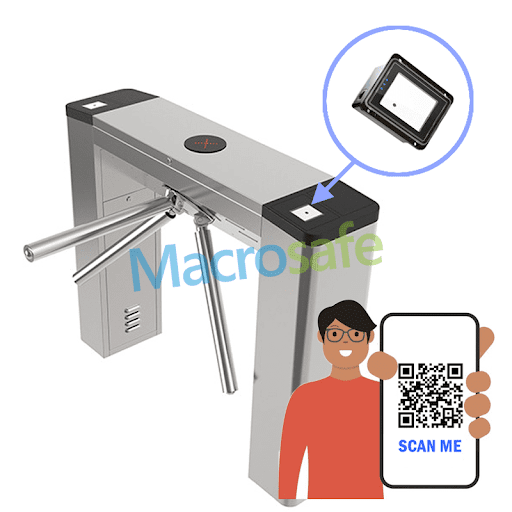Access control management is an essential part of ensuring the security of a property or facility. Traditionally, this has been achieved using physical cards or keys. However, with the advancement of technology, using QR codes and mobile phone credentials is fast becoming a more popular method for managing access control. In this article, we will explore how this technology works and how it contributes to achieving flexible access control management, including the use of QR code turnstiles.
Implementing access control using QR codes is simple and efficient. It involves creating a unique QR code that can be scanned by an authorized user’s mobile device or a standalone scanner. These codes can be used to gain access to secure areas and record time and attendance of authorized personnel.
QR code access control offers several benefits, including flexibility and convenience. Since most people carry mobile devices with them, it becomes easier to access secure areas by using their mobile phones. Moreover, mobile phone credentials and QR codes are easier to manage and update than traditional physical access cards, which require manual updates and replacements. This technology makes it possible to manage access remotely, track attendance records, and reduce the risk of unauthorized entry.
QR code turnstiles are highly effective in access control management. These are also referred to as speed gates, and they work by allowing access to authorized personnel in traffic areas. These turnstiles often come with the ability to read QR codes, allowing for quick access, even in busy environments. Beyond the use of QR codes, these turnstiles are also designed with various security features such as sensors that detect tailgating and provide alerts, making them an ideal solution for organizations with high-security needs.
Additionally, QR code access control provides a scalable and cost-effective option for managing access control. By using QR codes, there is no need for expensive hardware, such as specialized readers. Instead, the only required hardware would be the QR code scanners, which are available at an affordable price compared to traditional access control systems.
Another benefit of utilizing QR code access control is that it helps to transform user experience, making management far more flexible and cost-effective. For instance, there is longer a need to issue traditional access cards, which can be costly to produce and replace, if lost. Using mobile phone credentials and QR codes eliminates the need for staff to remember to carry multiple access cards or badges, which often leads to lost or forgotten cards, resulting in security risks.
In conclusion, implementing QR code access control provides a flexible, cost-effective, and secure method for managing access control. The use of QR code turnstiles, combined with mobile phone credentials, provides a scalable and secure way to manage access in high traffic environments. The technology is easy to implement and offers a user-friendly way of managing access control. Additionally, with the benefits of QR code access control systems including increased flexibility, ease of use, and enhanced security features, this technology is set to become an industry standard. Whether for businesses, schools, or any organization needing access control, QR code access control systems and QR code turnstiles offer an effective, secure, and easy-to-use solution for managing access control.
